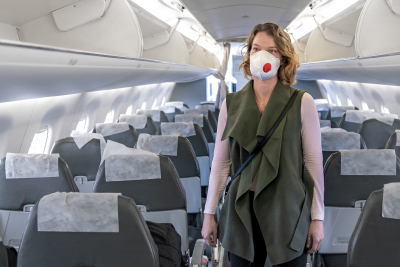Written by Isabelle Durant, UNCTAD Deputy Secretary-General
Public life in countries around the world has come to a near stand still. The drastic measures to combat the coronavirus are unprecedented but are proving critically essential. We do not yet know the full extent it will have on human and economic costs, but there is no doubt that it will be enormous. Current estimates predict between US$2 trillion to $3.4 trillion of income loss and 25 million job cuts. For one sector, the impact is particularly catastrophic: Tourism.
Tourism is a key contributor to GDP, employment and trade. Many forget this. The crisis severely affects each category of the sector: Travelling for leisure and business is at the moment one of our least priorities and our ability to visit family and friends is highly restricted or even forbidden. Our priority is to stay safe and indoors.
The fall in economic activity is already impacting thousands of tourism establishments.
In most countries across Europe, restaurants are closed and many hotels around the world have seen their booking numbers plummet.
As tourism is an important income provider, providing roughly one in ten jobs worldwide, this crisis threatens the jobs of millions of people. With a workforce that comprises a comparatively high share of women and young people, it will hit those demographic groups hard which are already often the more vulnerable.
Unemployment, or the prospect of it, will severely restrict the ability and aspiration of many to travel, primarily affecting the leisure tourism industry. In addition to this, as many companies will be needing to consolidate their accounts, it will also constrict business travel, which accounts for around 13% of the sector’s total demand.
In many countries international tourism is a critical services export sector and thus a key source of foreign exchange. Globally, tourism accounts for almost 30% of services exports, but in many small island developing States (SIDS), this share is much higher. With less international tourism and foreign exchange, the capacity to service debt can quickly diminish. Adding to this the rapidly appreciating US dollar, an additional storm is looming on the horizon. Urgent multilateral action is required to prevent that storm.
The current measures on mobility do not only challenge the sector today but also tomorrow. To slow down the spread of the virus, for weeks and most probably months millions of people will stay at home and severe travel restrictions will apply. Connectivity will be limited with countless flight, bus and train connections cancelled. For several airlines survival will depend on financial aid – some may go into bankruptcy while for others countries prepare for nationalization. Given that nearly 60% of all international tourists reach their destination by air, reduced air connectivity beyond the health crisis will constrain the ability of the sector to recover.
This is a very bleak outlook and affects countries everywhere. The top tourism destinations in terms of international arrivals are all amongst the most affected: France, Spain, the United States, China and Italy. These are big economies where tourism plays an important role. However, for other countries, like Thailand and especially SIDS, the sector is more than that: it is their life line. In some cases, tourism is the top foreign exchange earner, GDP contributor or employer, or all three together.
If there is a source of hope, it is the fact that tourism has proven to be resilient and has experienced strong and rapid recoveries after crisis. We witnessed this after the SARS outbreak and Iraq war in 2003, as well as after the 2008/09 financial crisis. International tourism came back stronger than ever, recording an average annual growth rate of international arrivals of 5% between 2010 and 2018 and surpassing 1.5 billion international arrivals by 2019. Adding to this the demand from domestic tourists, it clearly indicates how much is at stake.
Thus, it is important that support measures will extend to the tourism sector so that those whose livelihoods depend on it can cope with this current adversity and then support the sector’s recovery when it rebounds. And we know that through the multiple and diverse linkages of the sector, tourism has the distinct and unique capacity to extend to millions of people, including in many rural communities. This is particularly relevant for tourism driven economies in the developing world who do not have safety nets and fewer alternative income sources. For instance, in Acapulco, Mexico, tourism businesses refused to shut down as for many tourism workers no work means no income.
Looking ahead, the pandemic is triggering reflections for the future of the sector. This can be an opportunity. As a result of flight and production cuts, CO2 emissions have decreased drastically and are leading to notable improvements in air and water quality. This supports the very asset on which many tourism destinations thrive – the beauty of nature in this natural state. Hence, the crisis reminds and hopefully convinces us how critical it is to pursue less carbon intensive tourism models.
More regional and more sustainable tourism may be the winning formula. Regional tourism is less pollutant owing to shorter distances and connectivity by less contaminating means. And sustainable tourism favours sourcing from local suppliers and is more mindful about water and waste management. This often is in contrast to models based primarily on mass tourism.
However, rethinking is not a foregone conclusion: To sustain and boost their economies, some governments may resort to fossil fuels as a cheaper source of energy. This could set them back in their aspirations to achieve the Sustainable Development Goals.
And for tourism to recover and transform into a more sustainable path, its businesses first need to survive this ravaging storm.
Read the original article on eureporter
Follow them: @eureporter on Facebook



